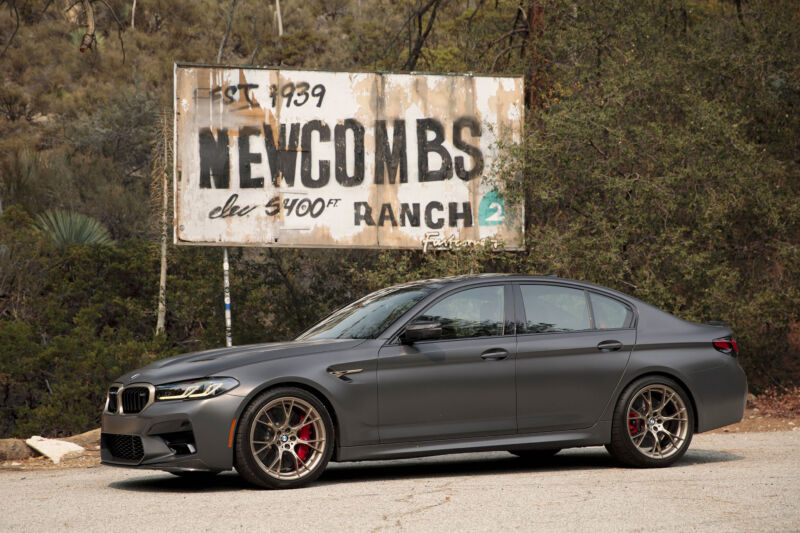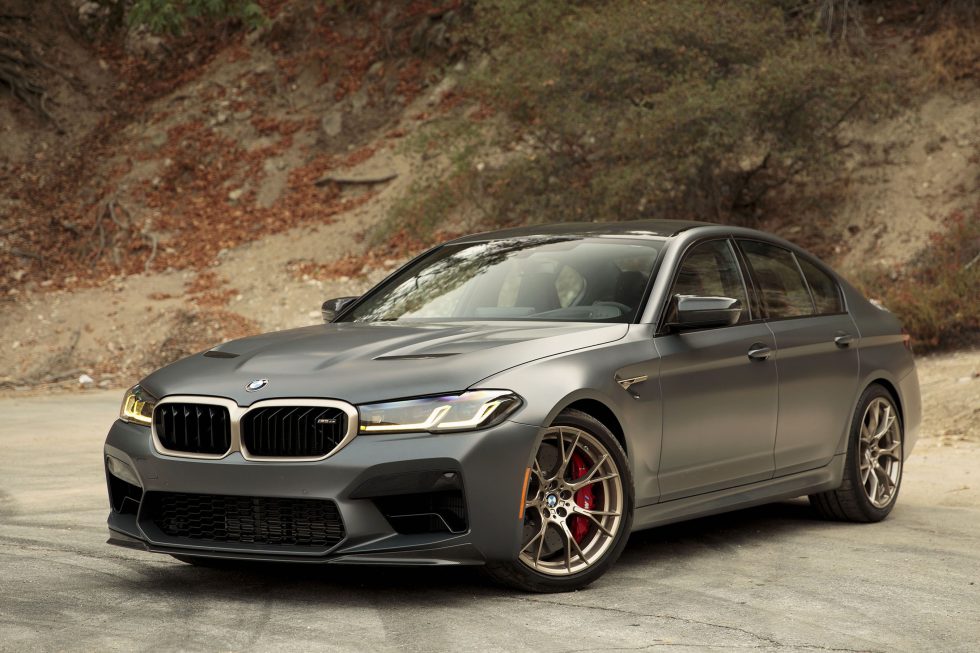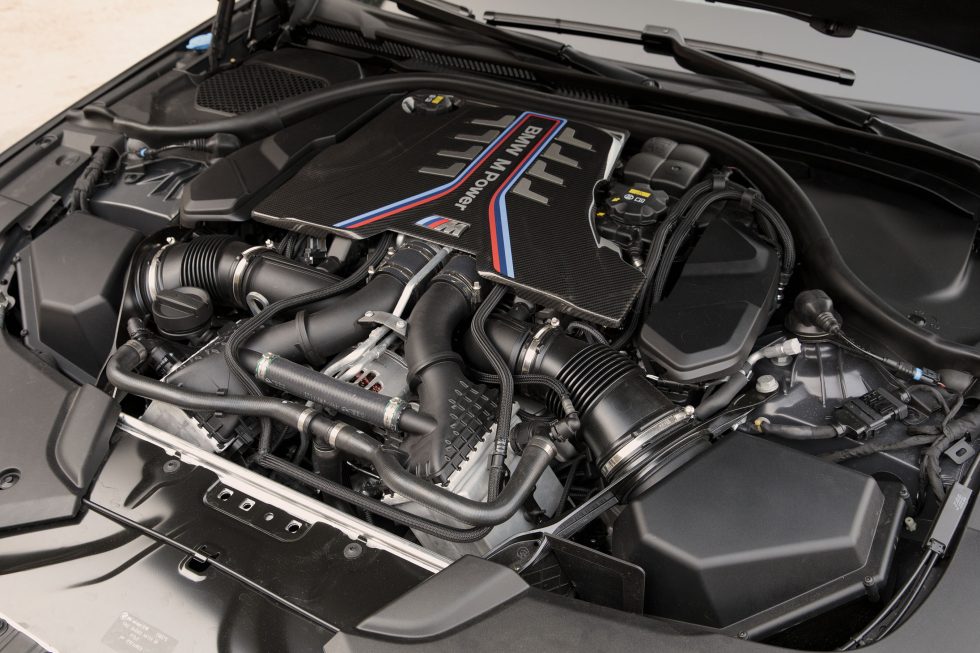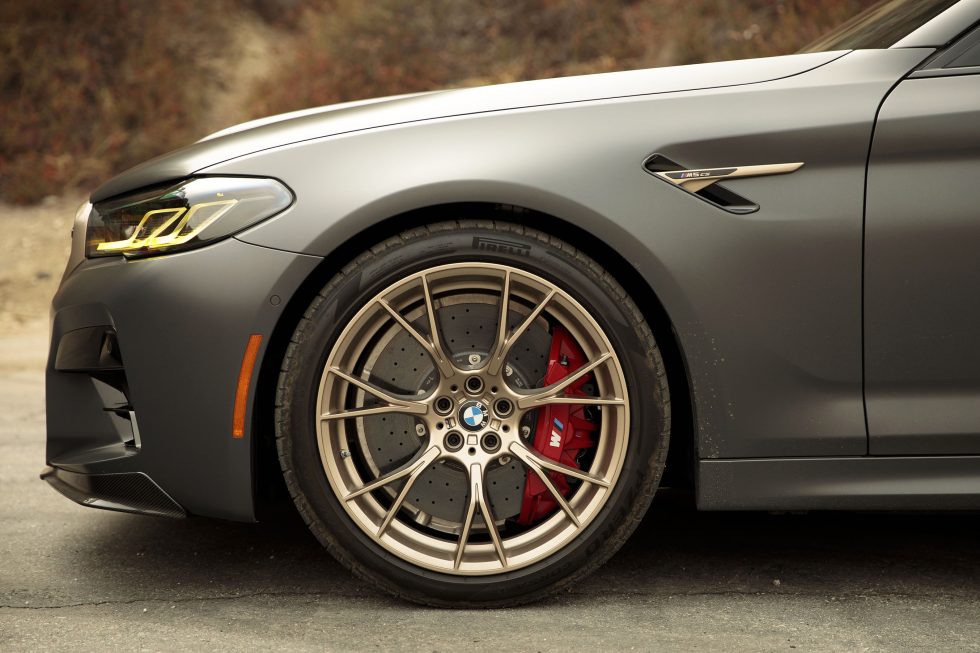best for last? —
This is the last-ever gasoline-only M5, and BMW has gone all out.
Bradley Iger
–

Enlarge / The first BMW M5 to ever receive the CS treatment is a seriously potent sports sedan, but that performance comes with some notable compromises.
Bradley Iger
Although today’s M5 is a far cry from the hot-rodded E28 that BMW introduced in 1984, the company has followed a common ethos with the badge throughout the decades. While other M cars like the M1 and M3 have had clear sports car intentions, the M5 has always made more sense as a posh Autobahn missile.
Over time, as the 5-Series has increased in size, weight, and amenities, BMW has leaned further and further into that notion, piling on power and comfort in nearly equal measure with each passing generation. Outfitted with a twin-turbocharged V8, all-wheel drive, and a traditional eight-speed automatic rather than a manual gearbox or a dual-clutch transmission, the current M5 is incredibly capable but also unapologetically civil. Your grandmother could take one to the grocery store and back without incident.
Well, unless it’s an M5 CS. As with the M4 CS and M2 CS that came before it, the M5 Competition Sport package is the swan song for the current-generation car, which brings a significantly stronger focus on outright performance. The result is a sedan that can generate Nürburgring Nordschleife lap times that put sports cars like the latest Corvette or 911 Carrera S in its rear-view mirror.

Enlarge / Yes, it’s a four-door sedan, but it’s one that can embarrass plenty of sports cars with its lap times.
Bradley Iger
It also takes just 2.9 seconds for the M5 CS to hit 60 mph (98 km/h) from a standstill, which makes this the quickest BMW production car ever built. But that kind of capability doesn’t come without a few caveats.
Saving the best for last
The car is available for a single model year and starts at $142,000 ($148,995 as tested). BMW wanted to make sure the M5 CS would stand out among its “garden variety” counterparts. Would-be buyers have three paint options to choose from: Brands Hatch Grey Metallic, Frozen Brands Hatch Grey Metallic, and Frozen Deep Green Metallic. Regardless of the hue selected, all M5 CS models are outfitted with unique gold accents, gold 20-inch M Sport wheels, and motorsport-style yellow LED running lights. The front splitter, rear diffuser and ducktail spoiler, roof panel, mirror caps, and redesigned hood are made from carbon fiber, too.
The motorsport aesthetic continues inside, where carbon fiber-backed sport seats are standard for the driver and front passenger; two individual buckets are in the back. Alcantara and carbon fiber abound, along with plenty of CS badging. Infotainment is typical iDrive 7 fare, but the software, wireless Apple CarPlay and Android Auto compatibility, and massive 12.3-inch touchscreen leave little to complain about. A second 12.3-inch screen serves as the configurable digital gauge cluster.
Don’t assume that the M5 CS is an overblown appearance package, though. Thanks to all that carbon fiber and a reduction in the amount of sound-deadening material used, the M5 CS is 230 lbs (104 kg) lighter than the M5 Competition. But it’s still no featherweight, tipping the scales at just over 4,100 lbs (1,860 kg).

Enlarge / The next BMW M5 will be a hybrid, which means this one may well become a collector’s item.
Bradley Iger
Fortunately, there’s a big, boosted V8 under the hood to get that mass moving in a hurry. The M5’s 4.4 L twin-turbocharged mill scores a 10 hp bump over the Competition model to bring output up to a healthy 627 hp (468 kW) and 553 lb-ft (750 Nm), and it’s channeled through the aforementioned eight-speed automatic transmission before being sent to all four wheels, or just the rears, depending on the powertrain setting selected. Torque vectoring between the front and rear axles and a standard Active M rear differential are on hand to make sure the grunt is sent where it’s needed the most.
Power-to-weight ratio improvements are always welcome, but some of the CS’s most significant performance advantages over the standard M5 are found in the chassis. It rides 0.2 inches (10 mm) lower than an M5 Competition on springs that are 10 percent stiffer, while firmer engine mounts and a beefed-up rear antiroll bar help to tighten things up even further. Carbon-ceramic brakes with red calipers come standard.
Gold-colored calipers are available as a no-cost option, as are super-sticky Pirelli P Zero Corsa tires, and the latter are essential if you really want to experience the full effect of the CS package.

Enlarge / Big brake discs almost entirely fill the wheels.
Bradley Iger
Although efficiency probably isn’t at the top of your list of priorities if you’re shopping for a sports sedan with a twin-turbo V8, there is a sliver of good news on that front. If you can keep your foot in control, the CS will deliver fuel economy identical to that of the standard M5—17 mpg (13.8 L/100 km) combined.

